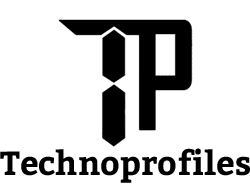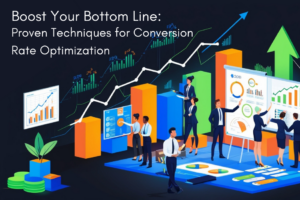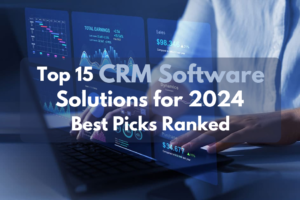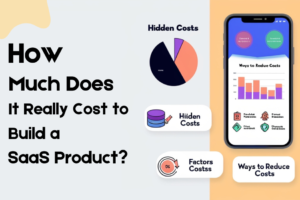Step By Step Guide on Product Engineering? (And Why Does It Matter?)

Table of ContentsToggle Table of ContentToggle
Product engineering is designing, developing, and testing a product. It goes from concept to production. It involves a step-by-step approach to creating products. The products must meet specific requirements. They must solve user problems and bring value to customers. Product engineering has many stages. These include ideation, design, prototyping, testing, and manufacturing. The focus is on making the product work well and is cheap to make.
Product engineering aims to create new, high-quality products. It must meet customer needs, stand out from competitors, and succeed in the market. It needs teamwork across many kinds of teams. These include engineers, designers, marketers, and manufacturing experts. They work together to bring a product from idea to reality. The industry of product engineering is on the rise. Allied Market Research says the global product engineering services market was valued at $1085.8 billion in 2021. They project it to reach $1610.6 billion by 2031.
To meet these challenges well, companies can improve their product engineering. This will drive innovation and give value to customers. Working together, agility and continuous improvement are key. It helps us overcome challenges and achieve success in product engineering.
1. Managing complexity is key : Products are getting more complex from tech advances and customer demands. Managing the complexity of product design, development, and manufacturing processes can be challenging.
2. Innovation Pressure: Staying ahead of the competition requires continuous innovation. Companies must invest in research and development. They do this to make products that meet changing customer needs and wants.
3. Speeding up product development is crucial : It is key to seize market opportunities and keep a competitive edge. Accelerating time-to-market requires efficient processes, collaboration, and rapid prototyping.
4. Cost Control : Balancing cost constraints with quality and performance requirements are essential. Companies must improve how they make things. They must find cheap materials. It must reduce waste. This is key to staying profitable.
5. Supply Chain Disruptions : Globalization and supply chain dependencies can cause disruptions. They can result from factors like natural disasters, geopolitics, and pandemics. Companies need robust risk management strategies to mitigate supply chain disruptions.
6. Meeting regulations and standards is essential : It is needed for product safety and market access. Companies must navigate complex regulatory landscapes and ensure compliance throughout the product lifecycle.
7. Sustainability is important in product engineering : Consumer awareness and rules have raised its importance. Companies must consider the environment. They must do this when they design and make products. They must think about efficient resource use and product disposal.
8. Integrate emerging technologies : These include artificial intelligence, the Internet of Things (IoT), and additive manufacturing. But, doing so requires expertise and investment. Companies must assess the potential benefits and risks of adopting new technologies.
9. Talent Acquisition and Retention are key : It’s vital to recruit and keep skilled engineers, designers, and technologists. They are critical for innovation and success in product engineering. Companies must invest in talent development, training, and employee engagement initiatives.
10. Customer-Centric Design: Understanding and meeting customer expectations is essential for product success. Companies must gather feedback. It must also do market research. And, they must prioritize customer needs. It must do this throughout the product development process.
Product Engineering
Prototype development is crucial in product engineering. It lets engineers and designers see, test, and refine their ideas. They can do this before full production. By investing in prototyping, companies can minimize risks and improve product designs. It can also deliver better products to market.
New Product development

1. Idea Generation: Generate ideas for new products or improvements to existing ones.
2. Concepts Develop: Refine them into proposals. Then, evaluate if they are feasible and have market potential.
3. Design and Engineering: Develop detailed designs and engineering plans for the product.
4. Prototyping and Testing: Build prototypes to test functionality, usability, and performance.
5. Manufacturing Planning: Plan production processes, select suppliers and source materials.
6. Production and Quality Assurance: Make the product. Also, ensure its quality, safety, and regulatory compliance.
7. Launch and Market Entry: Introduce the product to the market. Do this through marketing, sales, and distribution efforts.
8. Post-Launch Evaluation and Improvement : Monitor performance and get feedback. Make changes or additions as needed.
Product Lifecycle Management (PLM)
PLM is a systematic way to manage a product’s entire lifecycle. It covers from the start, through design and making, to service and disposal. It involves coordinating people, processes, and business systems. The goal is to ensure a product meets market demands, quality standards, and rules. This applies throughout the product’s life.
PLM involves cross-functional collaboration. It happens among various departments. These include product management, engineering, manufacturing, marketing, sales, and customer service. PLM software systems are often used to streamline processes and automate them. They manage product data and help with communication and collaboration across the organization. By managing the product lifecycle well, companies can optimize product development. They can cut time to market. They can also improve product quality and boost customer satisfaction and loyalty.

1. Idea Generation and Conceptualization : This stage is about idea generation. It’s for new products or improvements to existing ones. It includes market research, brainstorming, and identifying customer needs.
2. Product Design and Development : We select an idea. Then, we create detailed designs and specs. This stage has 3 parts. They are prototyping, testing, and refining the product design. The goal is to ensure it meets customer needs and quality standards.
3. Manufacturing and Production : After finalizing the design, the product enters production. This involves setting up production processes. It also involves sourcing materials and making the product at scale. This must be done while ensuring quality, efficiency, and cost-effectiveness.
4. Marketing and Sales : Once manufactured, the product is marketed and sold to customers. This stage involves making marketing strategies. It will be for advertising campaigns and distribution channels. The goal is to promote the product and make sales.
5. Service and Support : After the product is sold, we provide ongoing service and support to customers. This includes installing, maintaining, and fixing. It also includes customer service. The goal is to ensure customer satisfaction and loyalty.
6. End-of-life management is the next stage : The product has reached the end of its life and needs to be retired. This stage involves managing product obsolescence, recycling materials, and minimizing environmental impact.
A product roadmap is a shared source of truth. It outlines the vision, direction, priorities, and progress of a product over time. It’s a plan. It aligns the organization around short and long-term goals for the product or project. It also says how the goals will be achieved.
Agile product development
Product design thinking
Product quality management
The processes and activities a company uses. They must ensure that its products always meet or exceed customer expectations. They must also meet quality standards. It involves planning, controlling, and improving Product quality management systematically. This happens throughout the whole product lifecycle.

Here's an overview of product quality management
1. Quality Planning involves setting quality objectives, specifications, and product requirements : This includes finding what customers need. It also involves setting quality targets and making quality assurance processes.
2. Quality Control: It monitors and evaluates product quality during manufacturing. This may include inspections, testing, and sampling. They ensure that products meet quality standards and requirements.
3. Quality Assurance: Quality assurance focuses on preventing defects and errors before they occur. This involves setting up quality management systems. It also involves procedures and processes. They ensure consistency and compliance with quality standards. Quality assurance measures may include training, documentation, and process improvements.
4. Supplier Quality Management involves evaluating and managing material, part, and service quality : They are provided by suppliers. This includes picking good suppliers. It also means setting quality criteria. And, it means watching supplier performance. This is to ensure that bought items meet quality requirements.
5. Continuous Improvement: Continuous improvement is integral to product quality management. Companies strive to find areas to improve. They analyze the root causes of quality issues. Then, they take actions to enhance product quality and customer satisfaction.
6. Customer Feedback and Complaint Management : Customers’ feedback and complaints are valuable. They help us find quality issues and chances for improvement. Companies should have processes. They should collect, analyze, and respond to customer feedback and complaints well.
7. Product Testing and Validation verify that products meet requirements : They also check that products work as intended. This may include product testing in labs. It also may include field testing. And it may include validation against standards and regulations.
8. Risk management involves finding, assessing, and reducing risks : These risks could impact product quality or safety. This includes finding risks. It also includes taking steps to reduce risks and watching risks over time.
9. Regulatory compliance is essential : It ensures product quality and safety by meeting regulatory and industry rules. Companies must stay up-to-date with relevant regulations and standards. It must ensure that their products comply with the rules.
User Experience (UX) design
User Experience (UX) design enhances user satisfaction. It does this by improving usability, access, and pleasure. It’s about the interaction between a user and a product. It includes all aspects of the user’s interaction with a product. UX design includes its interface, features, speed, and overall ease of use.
An MVP is a version of a product with the fewest features needed to satisfy early customers. It also confirms key product assumptions. It checks if the product is viable and in demand. The idea of MVP is key to lean start up and agile product development. An MVP’s goal is to quickly test a product idea with real users. It gathers feedback and iterates based on that feedback to improve the product. An MVP is a tool for start-ups and product teams. It helps them validate their product ideas, reduce risks, and use resources better. It allows companies to test the waters. They do this before fully committing to making a product. This increases the chance of building a successful product. It also makes it sustainable in the long run.
MVP is typically more cost-effective than building a fully-featured product from the outset. Focus on the fewest features needed to test the product idea. This cuts costs and lowers the risk of building a product users won’t like.
Bills of Materials
Key components of a Bill of Materials include
1. Part Number: It’s a unique identifier for each item in the BOM. It helps with tracking and identification.
2. Description: A brief description of each item, including its name, type, and specifications.
3. Quantity: The quantity of each item required for one unit of the finished product. This may include quantities for raw materials, components, and sub-assemblies.
4. Unit of Measure: The unit of measure used to quantify each item (e.g., pieces, meters, kilograms).
5. Reference Designators are identification labels or codes: They indicate where each item is used in the product assembly. This streamlines manufacturing. It ensures each component is placed correctly.
6. Supplier Information : It has info about the suppliers or vendors. It includes their names, part numbers, and contact details.
7. Cost Information: The cost of each item includes material, labour, and overhead costs. This information helps calculate the total cost of manufacturing the product.
8. Lead Time: The lead time or delivery time required for each item to be procured or manufactured. This information is crucial for production planning and scheduling.

Conclusion
Product engineering is complex. It covers the design, development, and optimization of products. The goal is to meet customer needs while aligning with business objectives. Product engineers work together throughout the product’s lifecycle. This ranges from conceptualization to end-of-life management. It works to innovate, iterate, and refine the product for market success.
About Author

Written By Darshan Saroya
Darshan Saroya, a senior web developer and technical content writer, has been developing custom projects for TechnoProfiles for 7+ years. His expertise lies in WordPress, Laravel, MERN, MEAN and custom web/app development.





